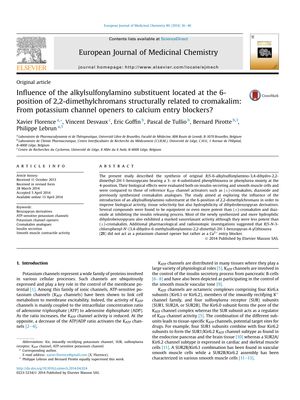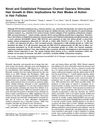Influence of the Alkylsulfonylamino Substituent Located at the 6-Position of 2,2-Dimethylchromans Structurally Related to Cromakalim: From Potassium Channel Openers to Calcium Entry Blockers?
April 2014
in “
European journal of medicinal chemistry
”

TLDR New compounds similar to cromakalim were less effective at inhibiting insulin release but improved in solubility and one acted as a calcium entry blocker, not a potassium channel opener.
The study focused on creating and testing new compounds structurally similar to cromakalim, a known potassium channel opener, to see their effects on insulin secretion and smooth muscle relaxation. The researchers synthesized a series of new 6-alkylsulfonylamino-substituted 2,2-dimethylchroman analogues and found that while some were effective at inhibiting insulin release, they were generally less potent than existing 6-bromo-substituted analogues. However, these new compounds were more hydrophilic, which improved their solubility in experimental mediums. Most exhibited vasorelaxant activity, with one compound (24) being as potent as the reference drug diazoxide. Interestingly, compound 21 was identified as a calcium entry blocker, not a potassium channel opener, suggesting a different mechanism of action similar to the drug verapamil. The study concluded that these new compounds could be promising as vasorelaxant agents with better solubility and tissue selectivity.



